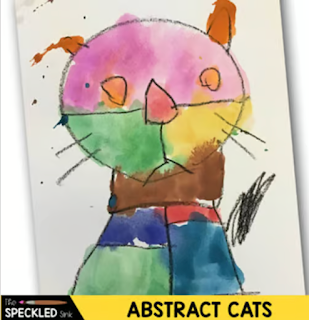When it comes to introducing children to the world of abstract art, I find Paul Klee is one of the most captivating and approachable artists. His playful style lends itself to a variety of engaging art projects that are scalable for different age groups and abilities. Here are some of my top reasons to start with Klee when teaching abstract art
1. Imagination and Playfulness
Klee’s work is infused with a sense of play and imagination that resonates with children. His use of bold colors and shapes invites viewers to interpret the artwork in their own way, encouraging creativity and personal expression. When teaching kids about Klee, I like to emphasize the importance of imagination in art, prompting students to push their boundaries and create their own abstract pieces.
2. Accessible Techniques
Klee often employed simple shapes and lines in his compositions. This accessibility makes it easier for children to replicate his techniques in their own artwork. Whether it’s through drawing geometric shapes or experimenting with color mixing, kids can engage directly with Klee’s methods, fostering a sense of accomplishment and confidence in their artistic abilities.
3. Exploration of Color and Emotion
Klee was a master of color, using it not just to please the eye but to evoke emotion. He believed that colors could express feelings, which is a powerful concept for children to explore. Educators can guide students in understanding how different colors affect mood and perception, encouraging them to choose colors that resonate with their own feelings in their creations.
4. Cultural and Historical Context
Teaching about Paul Klee also opens the door to discussions about the historical context of art. As a part of the Bauhaus movement and influenced by various styles, Klee’s work can serve as a springboard for conversations about modern art, the evolution of artistic expression, and the connections between art and culture. This contextual understanding can enrich students’ appreciation of art beyond just aesthetics.
5. Diverse Subject Matter
Klee’s subjects ranged from playful to profound, often reflecting themes of nature, music, and childhood. His ability to blend reality with abstraction allows children to explore various topics, from storytelling through art to interpreting the world around them. This versatility can inspire students to create pieces that reflect their own experiences and interests.
6. Encouraging Individual Interpretation
One of the most exciting aspects of abstract art is its inherent ambiguity. Klee’s works invite multiple interpretations, teaching children that art doesn’t have to depict reality in a literal way. This can encourage critical thinking and discussion among students, as they learn to articulate their thoughts about what they see and how it makes them feel.








No comments:
Post a Comment